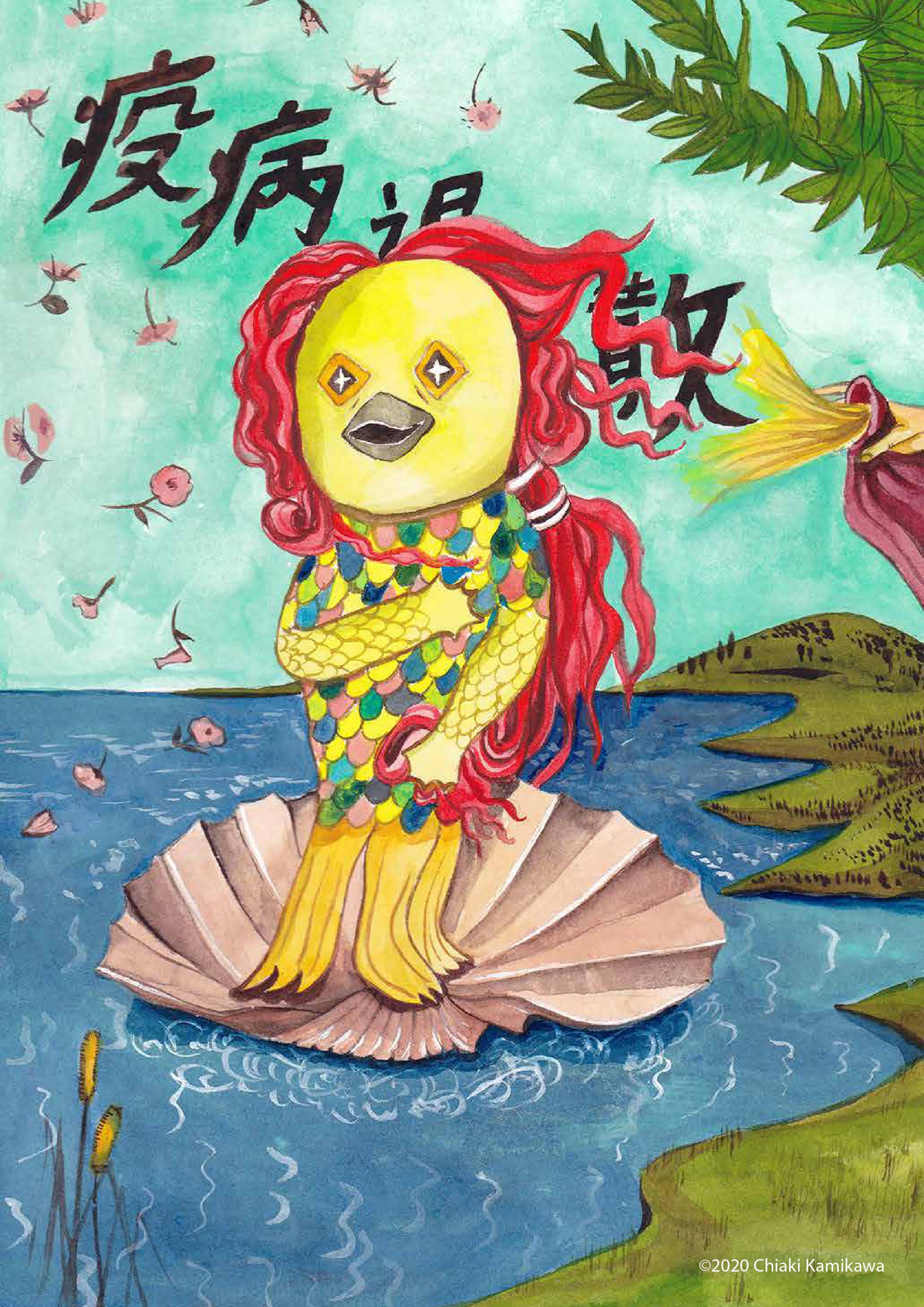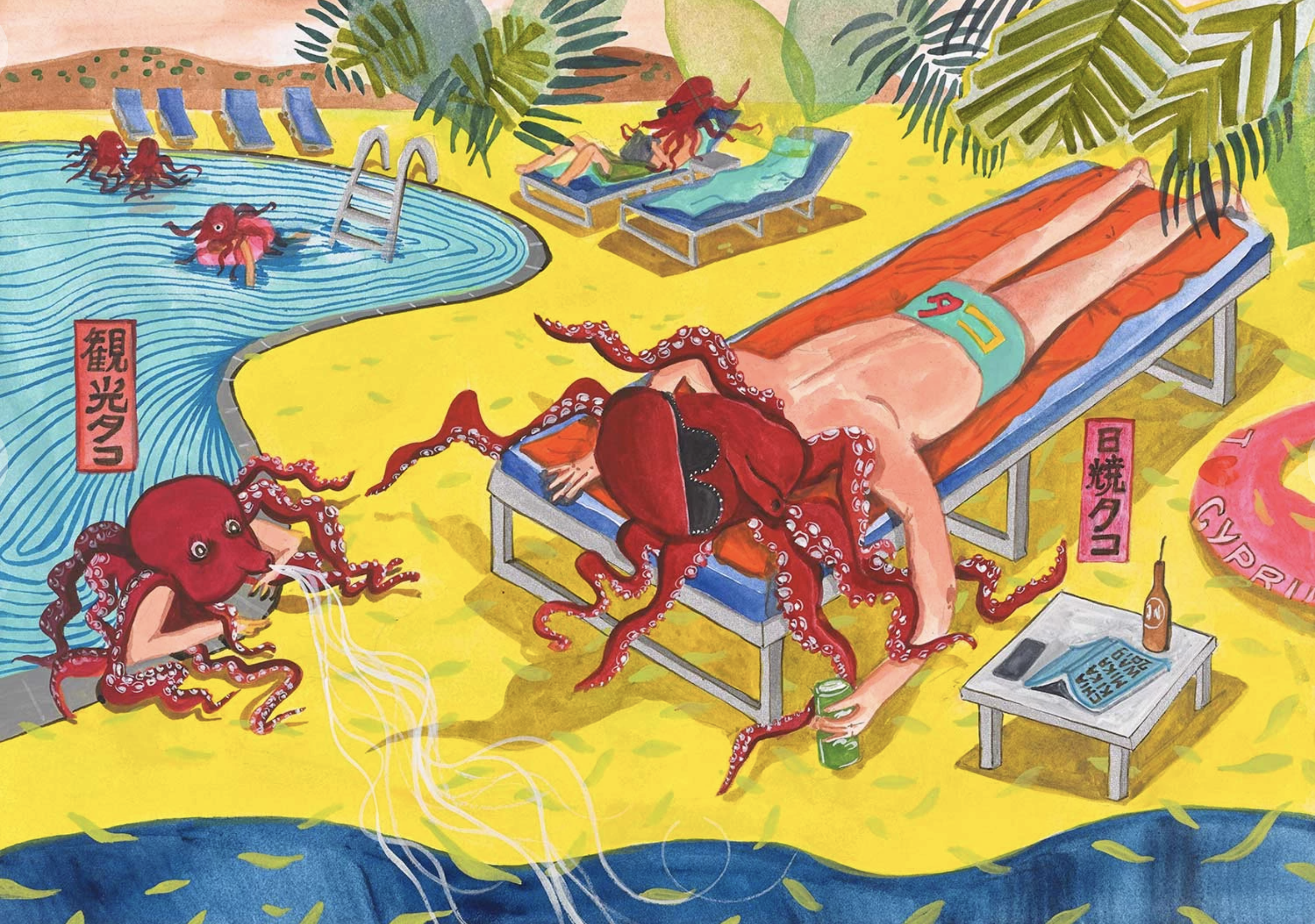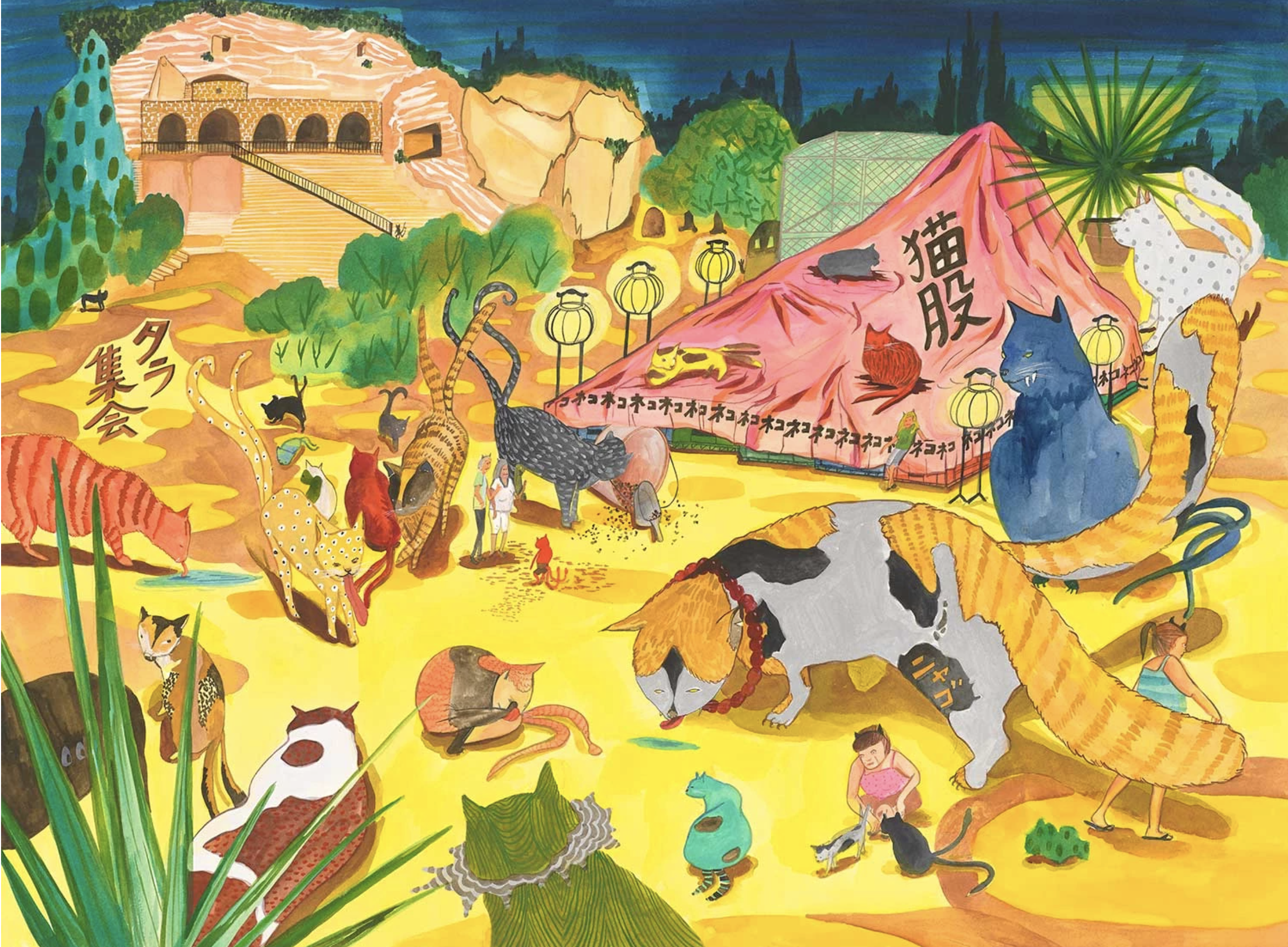When a ‘Yokai’ Meets Botticelli
In 2020, Japanese artist Chiaki Kamikawa decided to bring the 'yokai' Amabie face to face with the goddess Aphrodite.

“Amabie x Aphrodite”, Chiaki Kamikawa, 2020
Yokai occupy an important position in Japanese culture. They represent monsters, supernatural creatures. The term can be translated as ‘spirit’, ‘demon’, or ‘ghost’ and they can be friendly or hostile, and take on various forms. Artist Chiaki Kamikawa, originally from Kanagawa and now living in Cyprus, has been working on representing these figures since 2018. In 2020, the pandemic led to an encounter between a yokai and a goddess.
Since the beginning of her career, the artist has endeavoured to present alternative worlds to the public. She explains how she started a series of paintings and drawings in 2018 that depict yokai-like creatures in landscapes and everyday scenes specific to Cyprus. ‘I had a growing curiosity about animism and ideas such as spirits in nature, magical phenomena, and power spots, therefore I was eager to combine these ideas with my daily surroundings. It was probably my counterreaction to the rather distant attitude of people towards animism and mysticism in my current environments.’
Sharing and healing
The legend surrounding the yokai Amabie states that it emerged from the sea and asked people to share an image of it to ward off disease—a rather topical theme. Amabie was documented for the first time in 1846, by an official working for the Japanese government. An image of Amabie, even just copied, conserves its healing powers.
The piece Amabie x Aphrodite presents the coming together of the two characters. ‘I made Amabie x Aphrodite for two reasons. It was because of the pandemic and also because I live in Paphos in Cyprus, which, according to Greek mythology, is the birth place of Aphrodite’, the artist explains. She produced the work in Cyprus in 2020, during the first lockdown period. ‘I was already familiar with Amabie as I took a lot of inspiration from Shigeru Mizuki’s illustrated books on yokai. It just felt like very appropriate timing to combine Botticelli’s The Birth of Venus (Aphrodite in Greek mythology) and Amabie, which both emerged from the water’, Chiaki Kamikawa continues.
Conforming to Amabie’s original intention, she has made a PDF version of the piece available on her website. ‘Maybe I can make a small contribution to society instead of worrying about copyright’, Chiaki Kamikawa concludes.
Chiaki Kamikawa’s work can be viewed on her website.

'Sun tanned Octopus, Tourist Octopus', Chiaki Kamikawa, 2019

'Nekomata Tala Gathering', Chiaki Kamikawa, 2019

'Holiday', Chiaki Kamikawa, 2018
TRENDING
-
The Tattoos that Marked the Criminals of the Edo Period
Traditional tattoos were strong signifiers; murderers had head tattoos, while theft might result in an arm tattoo.

-
Paris, Tokyo: Robert Compagnon
With his co-chef and talented wife, Jessica Yang, Robert Compagnon opened one of the top new restaurants in Paris: Le Rigmarole.
 3:31
3:31 -
The Story of Sada Yacco, the Geisha who Bewitched Europe
Described by Dazed magazine as the first beauty influencer, she has been restored to her former glory since 2019.

-
Ito Jakuchu's Naturalist Paintings
From 15 September until 14 October 2018, the Petit Palais showcased the artist's iconic ‘Images of the Colourful Realm of Living Beings’.

-
Chiharu Shiota, Red Threads of the Soul
Last year, more than 660,000 people visited the retrospective 'Chiharu Shiota: The Soul Trembles' exhibit at the Mori Art Museum.





